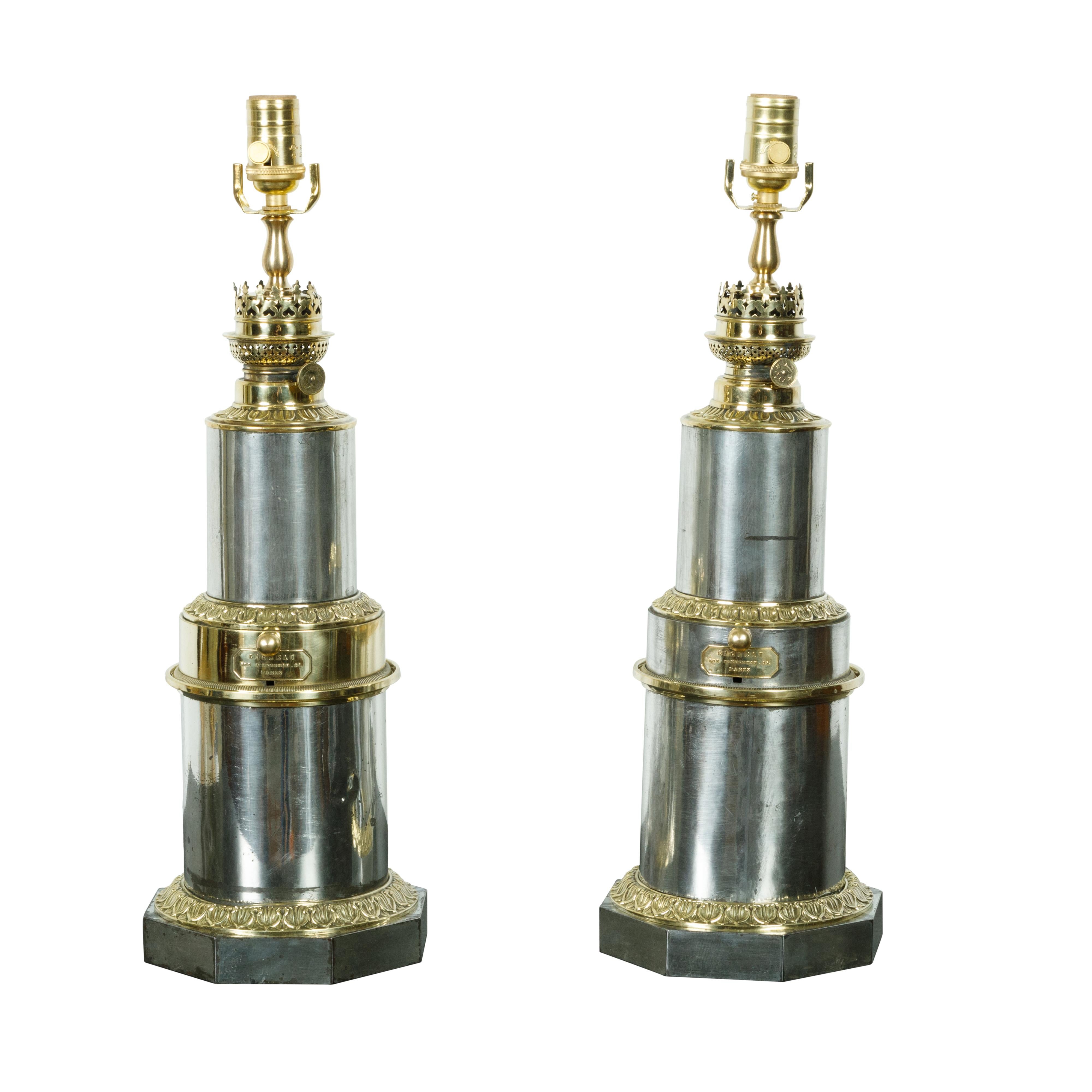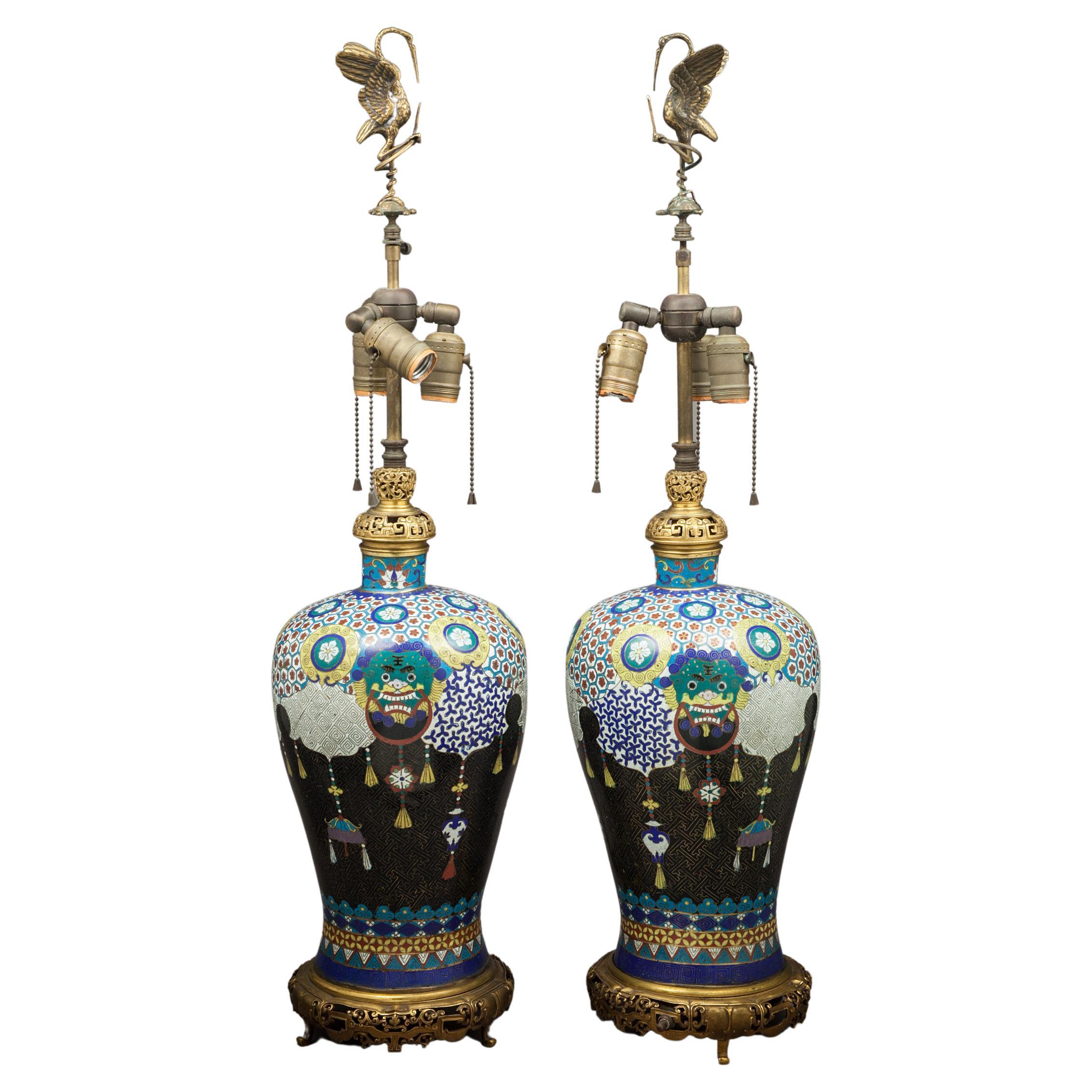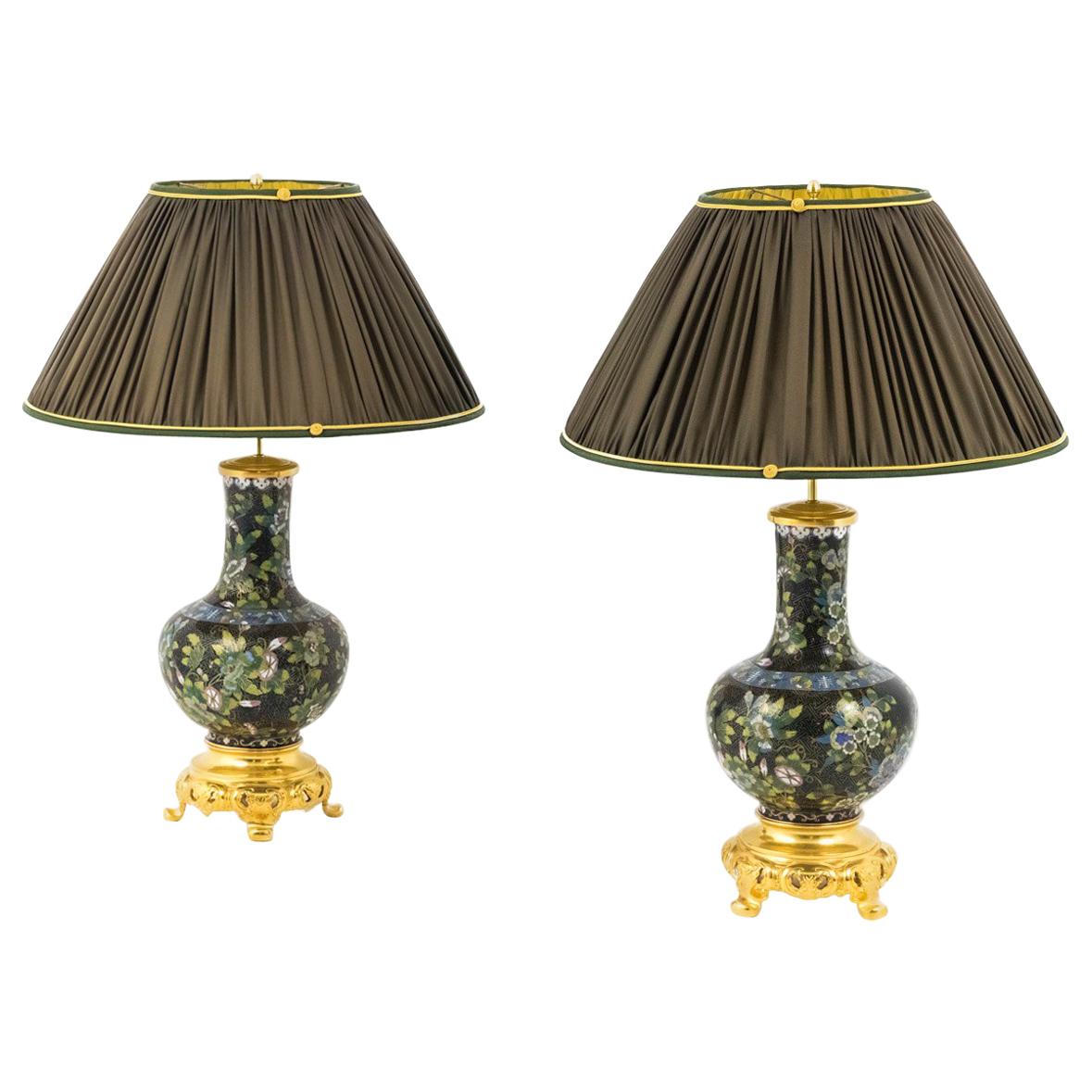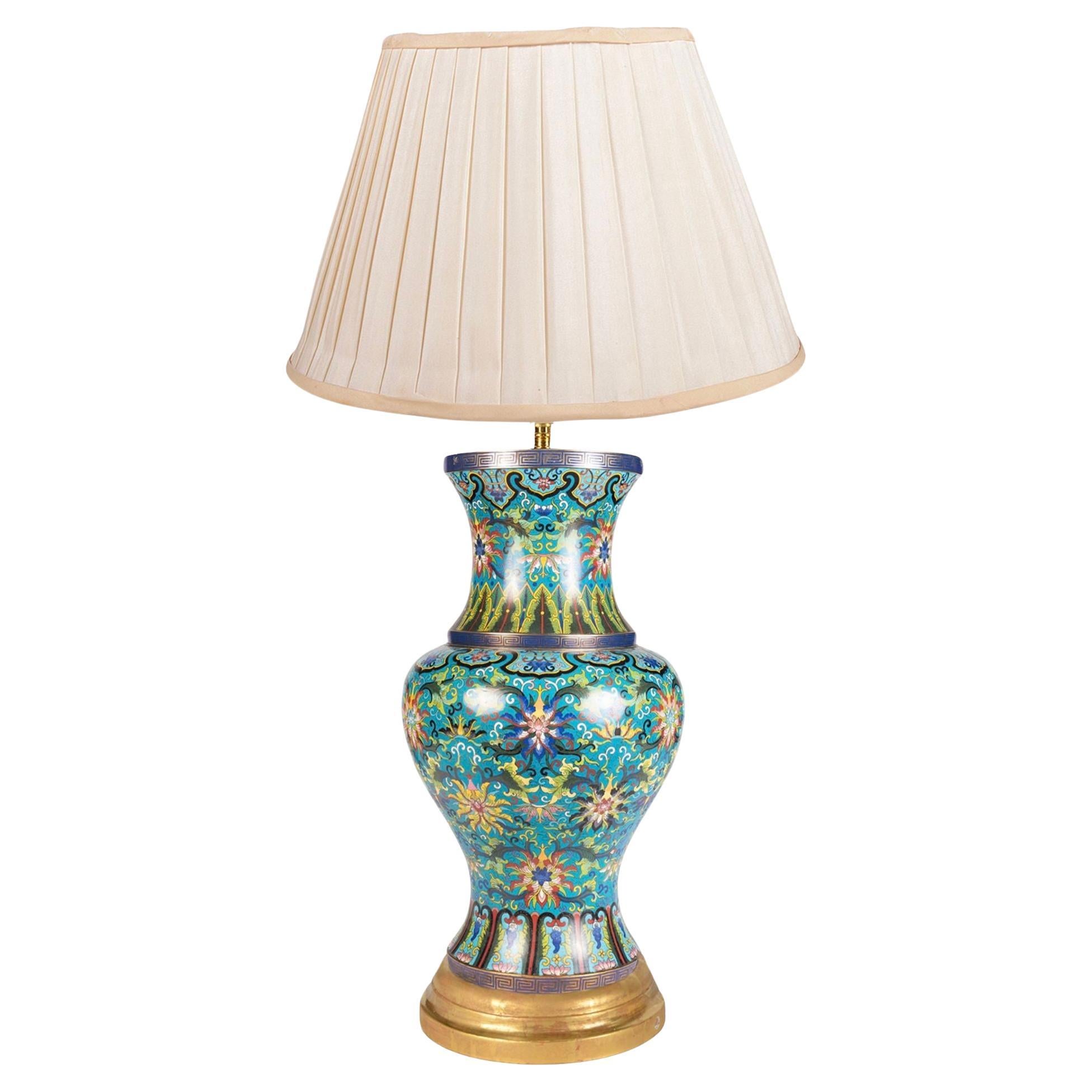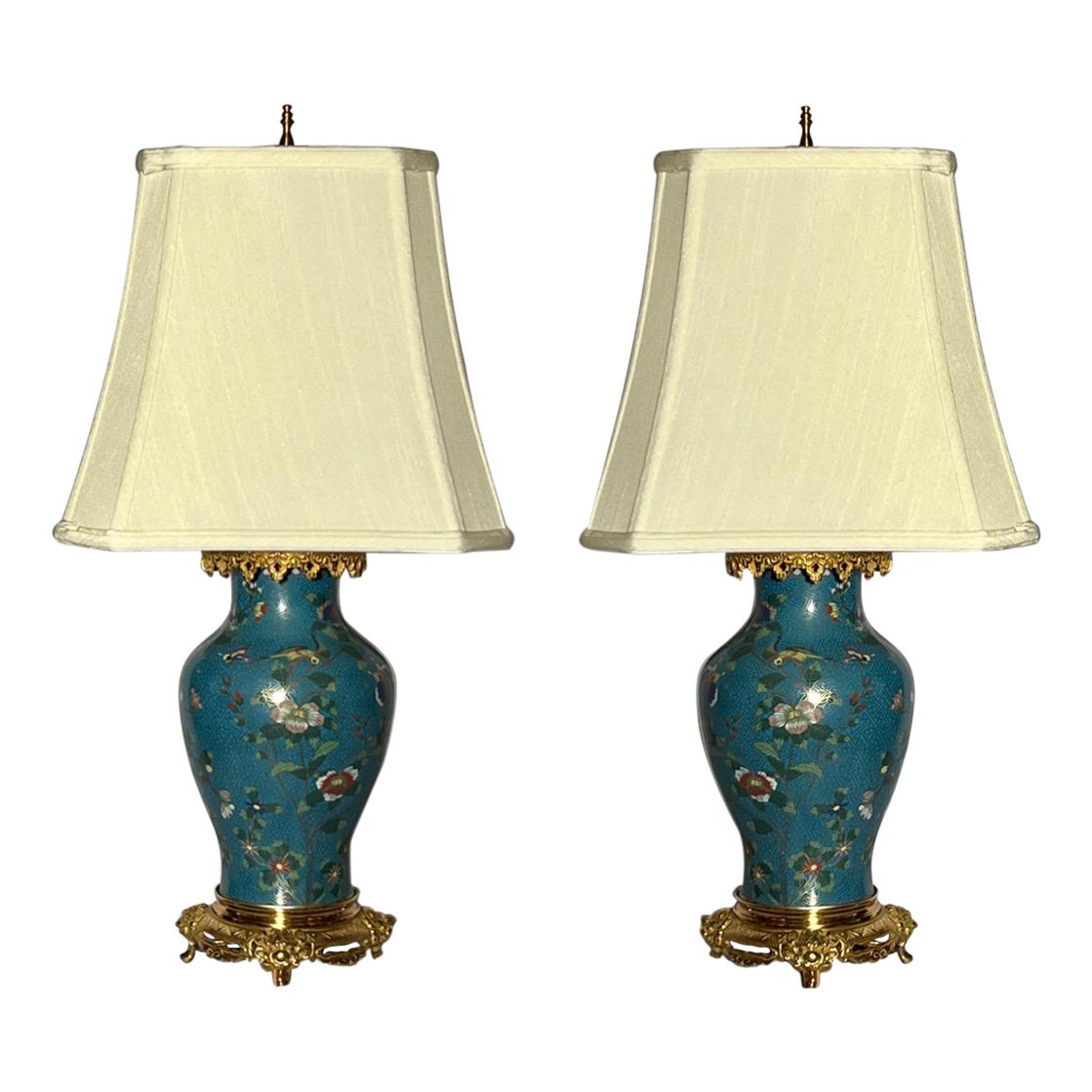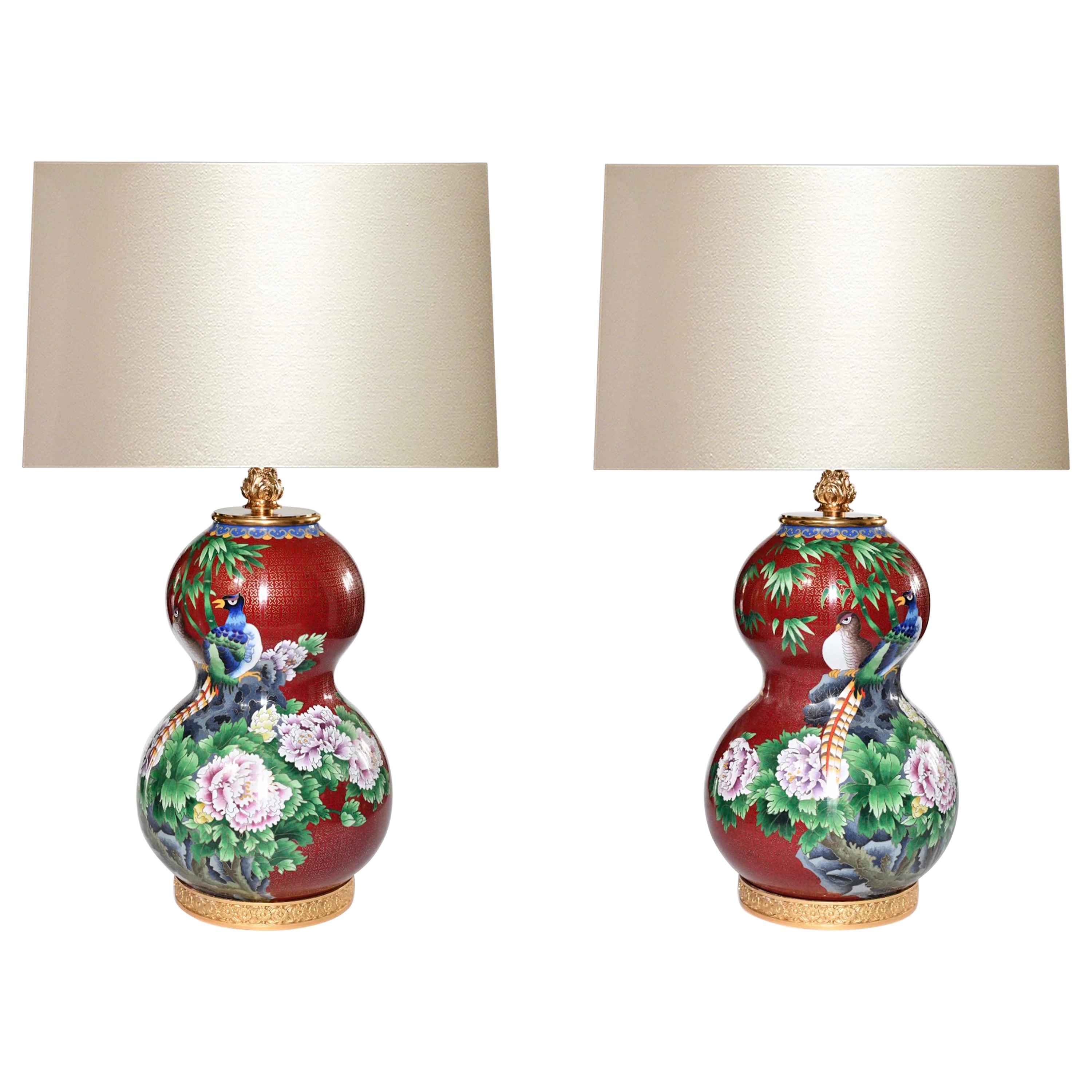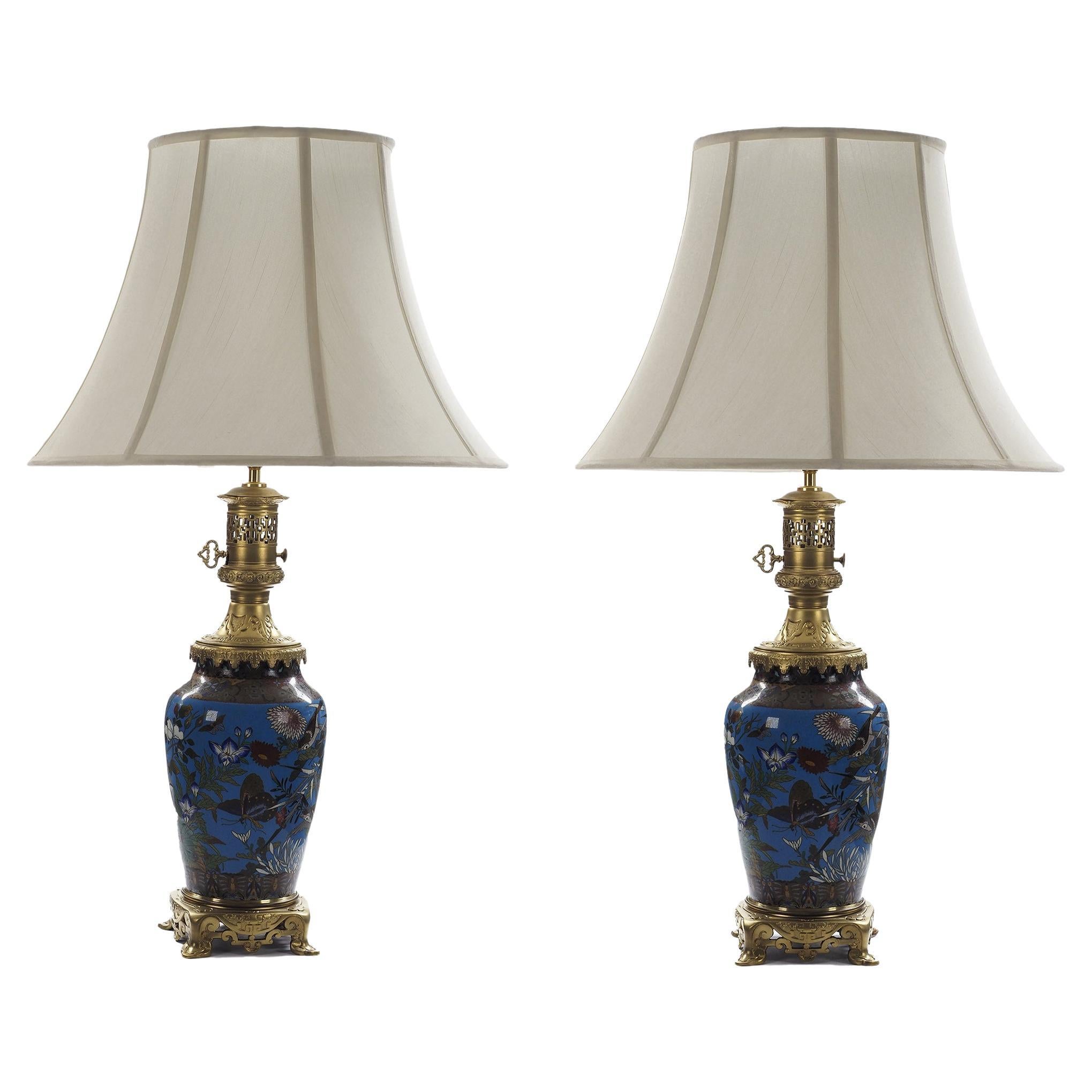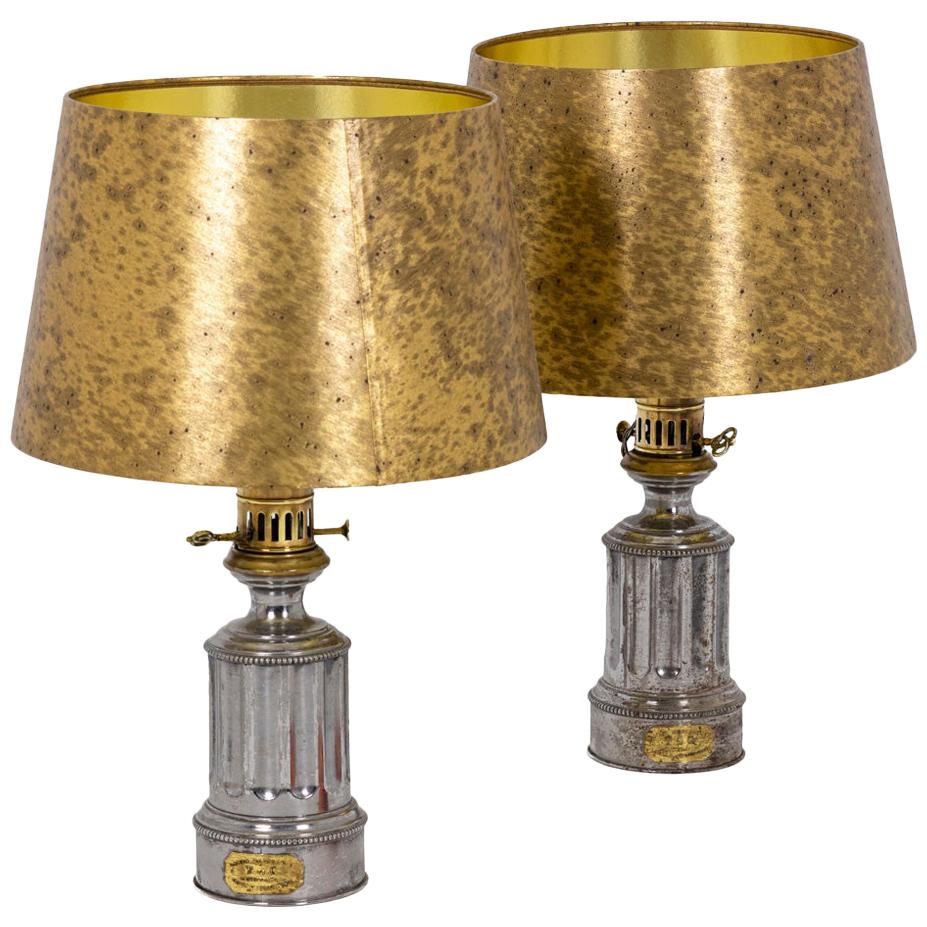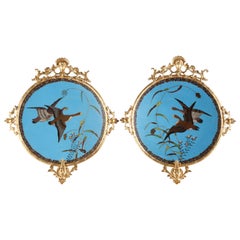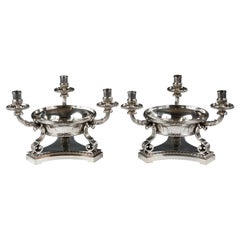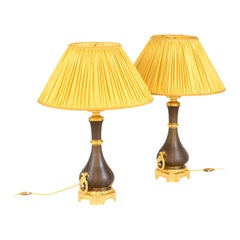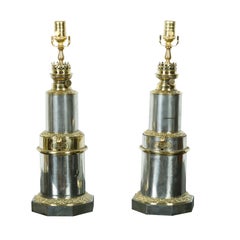
Fine Pair of Cloisonné Enamel Lamps by Gagneau, France, Circa 1880
View Similar Items
Want more images or videos?
Request additional images or videos from the seller
1 of 10
Fine Pair of Cloisonné Enamel Lamps by Gagneau, France, Circa 1880
About the Item
- Creator:Gagneau Paris (Manufacturer)
- Dimensions:Height: 24.41 in (62 cm)Diameter: 16.54 in (42 cm)
- Sold As:Set of 2
- Materials and Techniques:
- Place of Origin:
- Period:
- Date of Manufacture:circa 1880
- Condition:
- Seller Location:PARIS, FR
- Reference Number:Seller: 1544/11stDibs: LU3860311697771
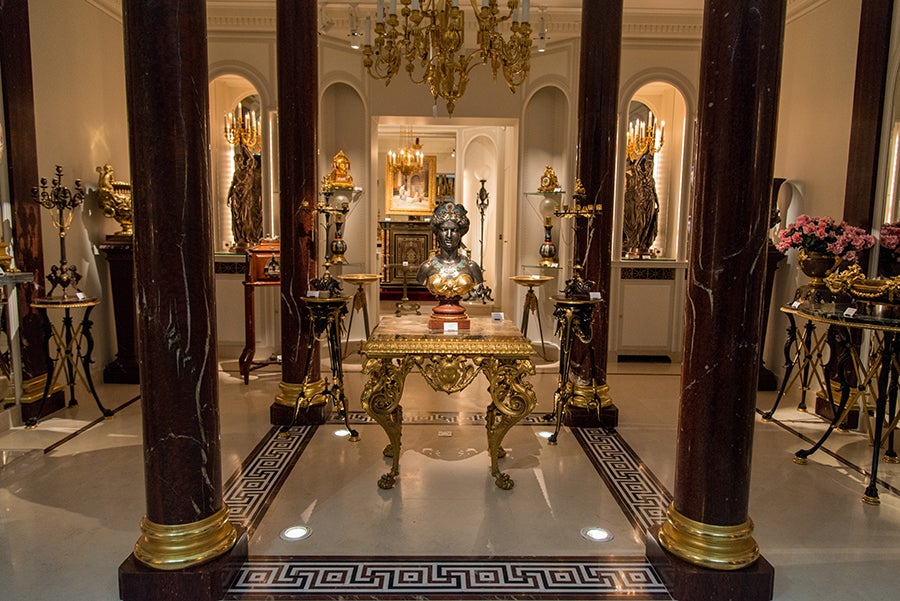
About the Seller
4.9
Vetted Seller
These experienced sellers undergo a comprehensive evaluation by our team of in-house experts.
Established in 1997
1stDibs seller since 2018
76 sales on 1stDibs
Associations
International Confederation of Art and Antique Dealers' Associations
More From This SellerView All
- Pair of Small Cloisonné Enamel Vases by F. Barbedienne, France, Circa 1880By Ferdinand BarbedienneLocated in PARIS, FRSigned F. Barbedienne on the mount. Charming pair of small curved-shaped vases in patinated and gilded bronze and polychrome cloisonné enamel decorated with flowers and birds. With ...Category
Antique 1880s French Japonisme Vases
MaterialsBronze, Enamel
$1,995 Sale Price / set30% Off - Fine Pair of 'Cloisonne' Enamel Dishes Attributed to A. Giroux, France, c. 1880By Alphonse Giroux et CieLocated in PARIS, FRBeautiful pair of polychrome “cloisonné” enamel display dishes attributed to A. Giroux, decorated with birds flying over rushes and flowers on a sky blue background, bordered with a ...Category
Antique 1880s French Decorative Dishes and Vide-Poche
MaterialsEnamel, Bronze
$10,524 Sale Price / set20% Off - Pair of Jardinieres-Candelabras by Boin-Taburet, France, Circa 1880Located in PARIS, FRSigned Boin-Taburet à Paris and numbered 34369 and 34370 Lovely pair of Louis XVI style planters with three light arms. Each jardiniere, with their liners in form of a basket based on a three leafy feet and a lobed base. The inner liners are removable. The two French goldsmiths George Boin and his son-in-law Emile Taburet created around 1875 in Paris the company Boin-Taburet. They made many silver pieces inspired by the beautiful services of the eighteenth century. At the Paris Universal Exhibition of 1878, Georges Boin presented a “service de toilette” inspired by the work of François-Thomas Germain (1726-1791), and then at the Universal Exhibition of 1889, several epergnes, including one of them executed after drawings by the famous artist Juste-Aurèle Meissonier (1695-1750), as well as tea sets of Louis XIV, Louis XV and Louis XVI styles. Boin-Taburet firm also exhibited a tureen and platter after Pierre Germain...Category
Antique 1880s French Louis XVI Table Lamps
MaterialsSilver
- Pair of Louis XIV Style Silvered Bronze Candelabras, France, Circa 1880Located in PARIS, FRPair of Louis XIV style five-light candelabras. Chiseled and silvered bronze. Ornamented with palmettes, medallions and feminine masks. Central stem with guilloche motifs, resting on...Category
Antique 1880s French Louis XIV Table Lamps
MaterialsBronze
- Japonisme Lamp Att. to E. Lièvre , Japan-France, Circa 1880By Ferdinand Barbedienne, Edouard LievreLocated in PARIS, FRHeight with lampshade : 133 cm (52,3 in.) / without lampshade : 125 cm (49,2 in.) ; Lampshade - Height 74 cm (29,1 in.) ; Diameter : 86 cm (33,8 in.) Important Japanese style gourd-shaped lamp, made with a polychrome Kutani porcelain vase decorated with lake scene and flowers in cartouches, in the middle of flying waders on a red background. It is covered with its original beige pleated silk lampshade, embroided with flowers and waders. It rests on an « old gold » patinated bronze base with stylized openwork decoration, topped with a Fô dog on each foot. Related work : Japanese enamel porcelain...Category
Antique 1880s French Japonisme Table Lamps
MaterialsBronze
- Pair of Orientalist Lamps Signed ThD, France, Circa 1875By Theodore DeckLocated in PARIS, FRSigned ThD on porcelain and Gagneau on the bronze mounts. A very fine pair of « blue Deck » earthenware lamps, ornated with a Persan decor. Mounted within pierced gilt-bronze bases....Category
Antique 1870s French Japonisme Table Lamps
MaterialsBronze
You May Also Like
- Maison Gagneau, Pair of Louis XVI Style Lamps, circa 1880By Gagneau FrèresLocated in Saint-Ouen, FRMaison Gagneau, signed. Pair of baluster shape Louis XVI style lamps in guilloche brown brass. Chiselled and gilt bronze mount. High of the mount with...Category
Antique 1880s European Napoleon III Table Lamps
MaterialsBrass
- Pair of French 1920s Gagneau Paris Steel and Brass Table Lamps with WaterleavesBy Gagneau ParisLocated in Atlanta, GAA pair of French Gagneau Paris steel and brass table lamps from the early 20th century with waterleaf motifs. Created in France during the first quarter of the 20th century, each of ...Category
Early 20th Century French Table Lamps
MaterialsBrass, Steel
- Pair of Porcelain Vases Ormolu-Mounted in Lamps by Gagneau Paris XIXth CenturyBy Gagneau ParisLocated in Saint-Ouen, FRPair of large Japanese Porcelain Cone Shape Vases with Imari decoration Important mounts in ormolu and gilded metal, the base decorated with a laurel wreath, the upper part of falling leaves and a frieze of knotted ribbon. The mounts signed Gagneau, 115 R. Lafayette. Circa 1860 With their original aluminium bulb cover and original gilding Vase it self Height 47 cm The Gagneau Company is one of the most famous lighting factories in Paris in the nine-teenth century, established in 1800 at 25 rue d'Enghien in Paris and later at 115 rue de Lafayette. She has participated in many exhibitions throughout this century. She began in 1819 with the Exposition des Produits de l'Industrie and later participated in the Universal Exhibitions where she was part of the jury in the category of art bronzes (class 25) at the Universal Exhibition in Paris in 1889. "Imari" was simply the trans-shipment port for Arita wares, from where they went to the for-eign trading outposts at Nagasaki. It was the kilns at Arita which formed the heart of the Japanese porcelain industry. Arita's kilns were set up in the 17th century, after kaolin was discovered in 1616. A popular legend attributes the discovery to an immigrant Korean potter, Yi Sam-Pyeong (1579–1655), although most historians consider this doubtful. After the discovery, some kilns began to produce revised Korean-style blue and white porcelains, known as Early Imari, or "Shoki-Imari". In the mid-17th century, there were also many Chinese refugees in northern Kyushu due to the turmoil in China, and it is said that one of them brought the overglaze enamel coloring technique to Arita. Thus Shoki-Imari developed into Ko-Kutani, Imari, and later Kakiemon, which are sometimes taken as a wider group of Imari wares. Ko-Kutani was produced around 1650 for both export and domestic market.Kutani Ware is characterized by vivid green, blue, purple, yellow and red colors in bold designs of landscapes and nature. Blue and white porcelain pieces continued to be produced and they are called Ai-Kutani. Ko-Kutani Imari for the export market usually adopted Chinese design structure such as kraak style, whereas Ai-Kutani for the domestic market were highly unique in design and are ac-cordingly valued very much among collectors. Ko-Kutani style evolved into Kakiemon-style Imari, which was produced for about 50 years around 1700. Kakiemon was characterized by crisp lines, and bright blue, red and green designs of dramatically stylized floral and bird scenes. Imari achieved its technical and aes-thetic peak in the Kakiemon style, and it dominated the European market. Blue and white Kakiemon is called Ai-Kakiemon. The Kakiemon style transformed into Kinrande in the 18th century, using underglaze blue and overglaze red and gold enamels, and later additional colors. Imari began to be exported to Europe when the Chinese kilns at Jingdezhen were damaged in the political chaos and the new Qing dynasty government halted trade in 1656–1684. Ex-ports to Europe were made through the Dutch East India Company, and in Europe the des-ignation "Imari porcelain" connotes Arita wares of mostly Kinrande Imari. Export of Imari to Europe stopped in mid-18th century when China resumed export to Europe, since Imari was not able to compete against Chinese products due to high labor costs. By that time, however, both Imari and Kakiemon styles were already so popular among Eu-ropeans that the Chinese export porcelain copied both, a type known as Chinese Imari. At the same time, European kilns, such as Meissen and English potteries such as Johnson Bros. and (Royal) Crown Derby, also imitated the Imari and Kakiemon styles. Export of Imari surged again in late 19th century (Meiji era) when Japonism flourished in Europe.Thus, in the western world today, two kinds of true Japanese Imari can...Category
Antique 1880s French Japonisme Table Lamps
MaterialsBronze
- Pair of Bronze Mounted Cloisonné Chinoiserie Lamps, French, circa 1880Located in New York, NYEach surmounted by a stork aloft a tortoise and feeding from a snake, the body elaborately decorated with masks, garlands, tassels, and fish against a lattice ground.Category
Antique 1880s French Table Lamps
MaterialsEnamel
- Pair of Lamps in Black Cloisonné Enamel and Gilt Bronze, circa 1880Located in Saint-Ouen, FROrigin: probably China and France. Pair of bottles shaped lamps in black cloisonné enamel mounted with chiseled and gilt bronze mount with a quadripod...Category
Antique 1880s Chinese Chinese Export Table Lamps
MaterialsBronze, Enamel
- Maison Gagneau, Pair of Lamp in Guilloche Gilt Brass, Late 19th CenturyBy Gagneau ParisLocated in Saint-Ouen, FRMaison Gagneau, signed. Pair of baluster shape lamps in guilloche gilt brass. They stand on a circular base. The collar is circled with a silvered ring...Category
Antique 1880s European Table Lamps
MaterialsBrass
Recently Viewed
View AllMore Ways To Browse
Lafayette Antique
Antique Table Lamps London
Antique Chandelier Table Lamp
Antique Chandelier Table Lamps
Chinese Oil Lamp
Antique Cloisonne Lamp
Cloisonne Lamp Antique
Cloisonne Enamel Lamps
Chinese Elephant Table
Gilt Crystal Wall Chandelier
Cloisonne Lamp Pair
Antique Chinese Oil Lamps
Chandelier Circa 1800
Pair Of Cloisonne Lamps
Patinated Bronze Chandelier With Crystal
Chinese Gilt Bronze Mounted Lamp
1800 French Chandelier
Pair Elephant Lamps


